From Blue Tits to Chikadees
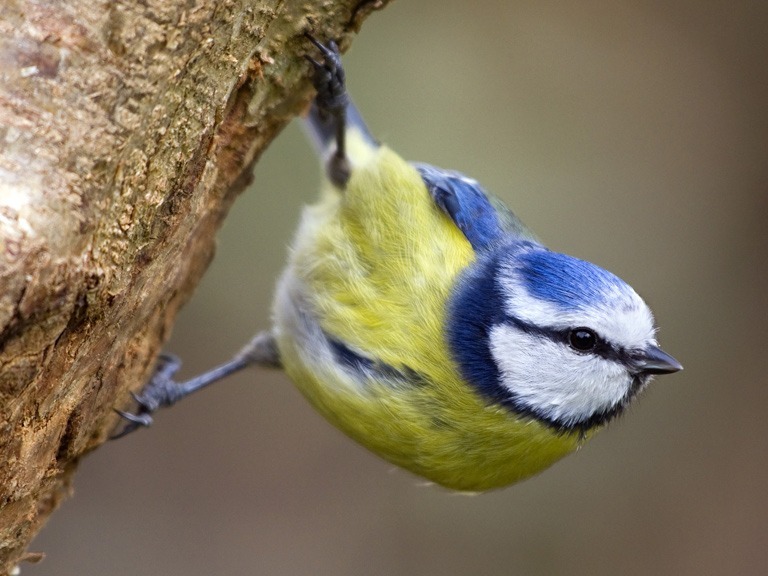
Growing up with blue tits on the farm is one of my earliest memories. These feisty little birds (4.5 in/12 cm in length) were noisy, sociable, and inquisitive, and the moment we hung up bacon rind after breakfast, they would be there, hanging upside down, pecking away at the food. The word “tit” is derived from the Old Norse word meaning tiny and the family consisted of another members in the UK, called great tit, coal tit, marsh tit, willow tit, and long tailed tit. They were common virtually everywhere, and at school it was normal to see them attacking the tin foil on the tops of school milk bottles to get at the cream below. More about my early life and how I discovered the shocking story about my arrival into this world is described in my novel Unplanned.
Blue tits are amongst the most intelligent birds and only the crow and parrot families exceed them. They have the knack for knowing what you are doing, and individual birds develop behaviors from which others learn – an example of social learning. The bird also has a sense of smell. Studies show that blue tits feeding their chicks will not enter the nest if the odor of a weasel has been added. They also have been shown to solve puzzles to enable them to reach a supply of food.
British blue tits are strictly resident, seldom moving away from where they were hatched. Their population has increased since my childhood, and today there are an estimated 4 million breeding pairs in Britain. In winter, they are joined by large numbers of visiting blue tits from the Continent trying to escape from the cold, and the population rises to around 15 million. The species is currently on Britain’s green list of endangered birds, that is “of least concern”.
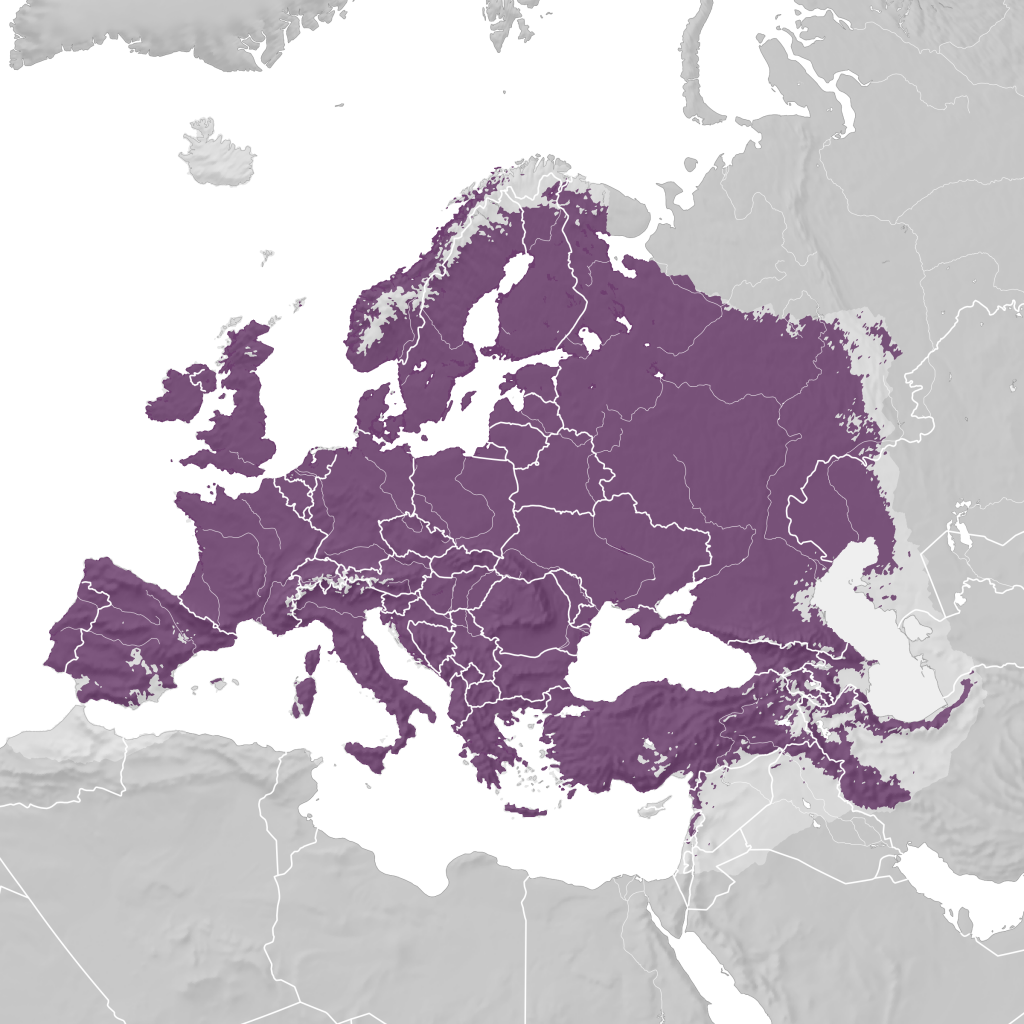 Blue tit Range Map
Blue tit Range Map
They are beautiful birds; each has a cobalt blue crown (edged in white), wings and tail, a greenish back and yellowish underparts. There is a black band running through the eyes of the bird and round its nape. Some of their British cousins are almost as pretty – such as the great tit, coal tit and long-tailed tit.
When I moved to California , this species of bird was no longer available to watch. They are absent from North America. However, what you do find are their close relatives in the form of titmice and chickadees. Fortunately chestnut-backed chickadees, the most colorful of chickadees, and pairs of oak titmice frequently visit my bird feeders.
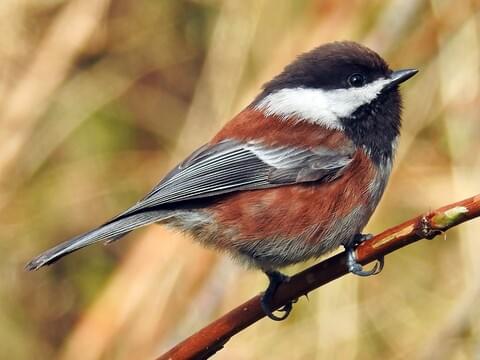 Chesnut-backed chickadee
Chesnut-backed chickadee
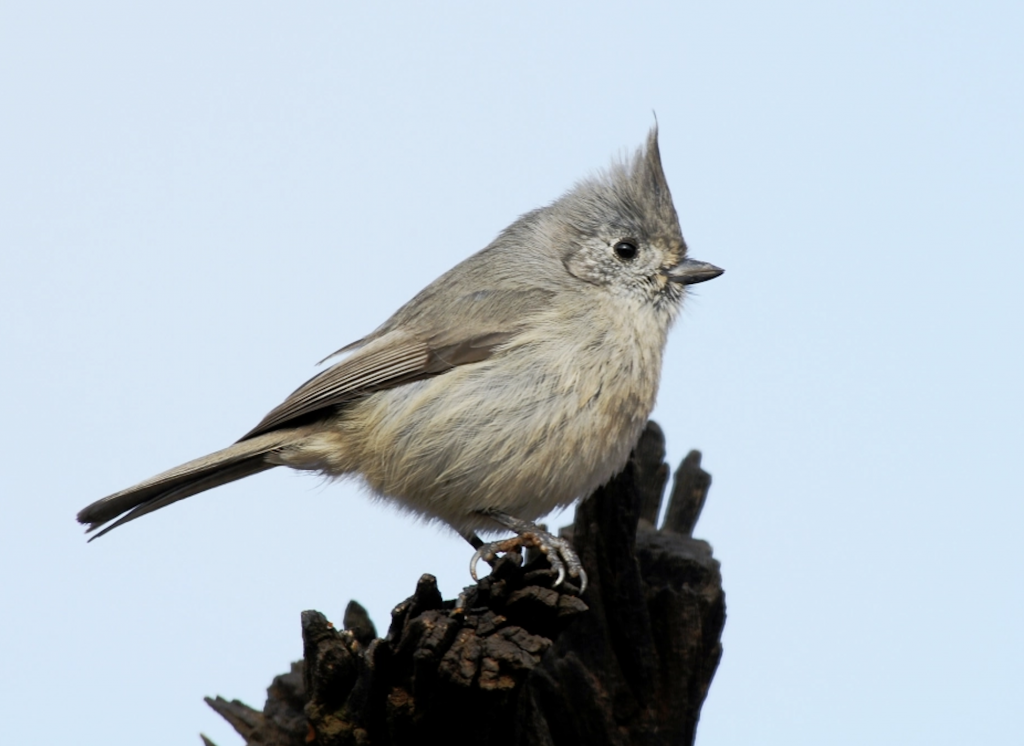 Oak titmouse
Oak titmouse
Both species are common in the Pacific Northwest and rarely migrate. The name titmouse originates from “tit” meaning small, but also from “mouse” that was used to describe a small bird. The chickadee is named after its distinctive call. There have been slight declines in their numbers, possibly because of loss of habitat, but both are classed as Of Least Concern. Watching them brings back memories of the entertaining blue tits I watched as a child in the UK.
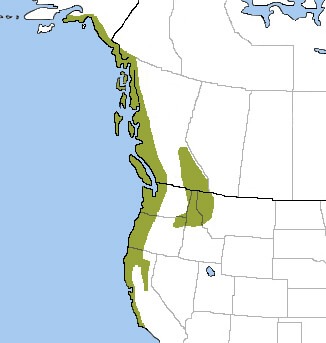 Range map for the Chesnut-backed chickadee
Range map for the Chesnut-backed chickadee
 Range map for the Oak titmouse
Range map for the Oak titmouse



